Mar 19, 2021
Echizen’s craft history and culture runs deep, Fukui Pref.
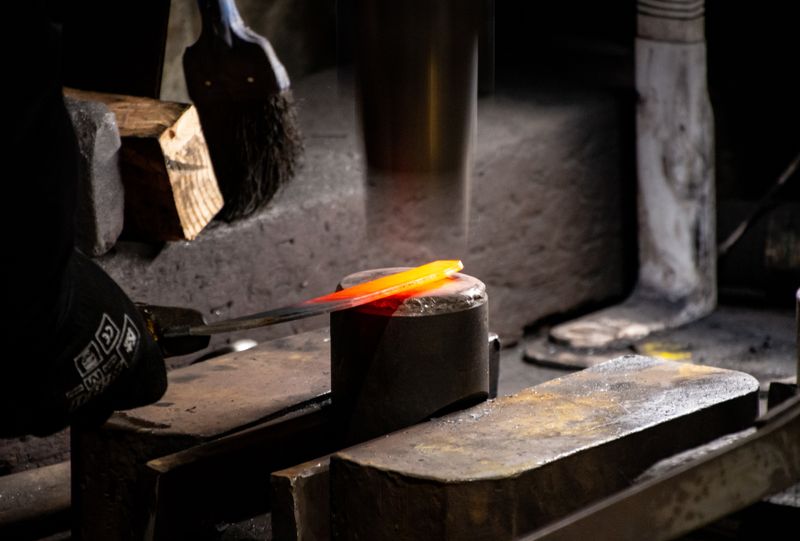
The city of Echizen in Fukui Prefecture, central Japan, is something of a hub for traditional crafts. You can know this because driving around the city it seems like every other road sign points the way to one insert-craft-here village or experience.
Take a road heading east out of town to discover the curious, and speculative, origin of one of Echizen’s traditional crafts -- Okamoto Otaki Shrine and Echizen washi (paper).
This pair of shrines is dedicated to a goddess of paper -- Kawakami Gozen -- the only such goddess in Japan. Legend goes that around 1500 years ago a woman taught the local people how to make paper, using the natural resources at their disposal, as an alternative form of income to rice-growing for which the area wasn’t suitable. The woman then disappeared upriver giving rise to her name Kawakami Gozen, “upriver princess.”
Okamoto Otaki Shrine sits at the eastern end of a part of town that is home to a number of paper-makers and their mills. It’s an atmospheric area of charming buildings, cut through with impossibly narrow lanes and pleasant streams, that climbs gently upward to meet the surrounding hills. Echizen washi (pre-novel coronavirus outbreak, at least) accounts for around 20 percent of the washi market in Japan so the paper-makers here are responsible for a significant share.
Paper-maker Osada Washi Co., Ltd was established in 1909, although the company’s paper-making actually goes back to the late 1870s when they started making fusuma paper (for use in Japan’s traditional sliding doors).
Today from their Echizen base the team at Osada Washi mixes techniques, passed on over generations, with innovative ideas to manufacture paper for a number of purposes -- wallpapers, tapestries, lampshades, bags and accessories, among others.
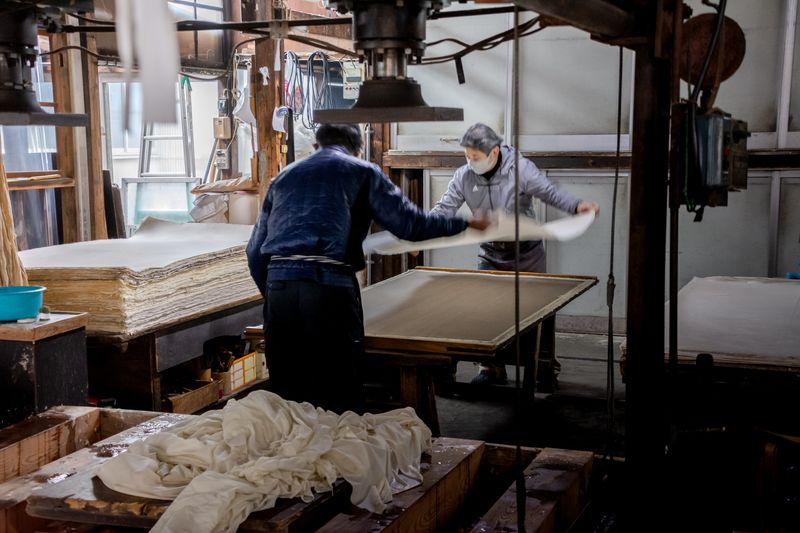
(Osada Washi)
“The history runs deep here. Washi has a history going back around 1500 years and a really strong culture has been created from that. It’s also a feature of Japan, the way paper is used even today as a kind of construction material, on walling, for doors. From the point of view of other countries this is a really, really curious thing,” said Izumi Osada, who returned to her Echizen hometown to work with Osada Washi after some years working in Tokyo.
“Putting all these aspects together and also being involved in the process from the production of the paper to showcasing the finished product, it’s something that I really enjoy,” she said.
Izumi and the team at Osada Washi have also been using their paper to create items for everyday use that include notebooks and business card holders. The product line-up can be seen here (in Japanese): https://osadawashi.stores.jp/
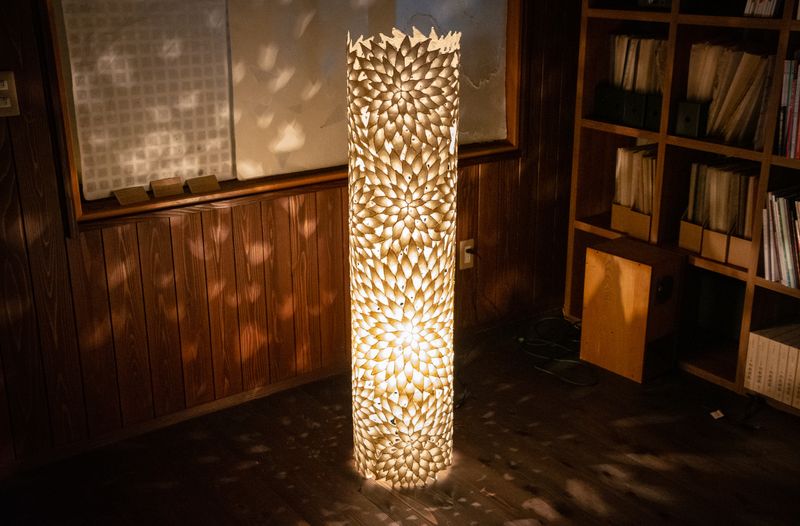
(Echizen washi lampshade, Osada Washi)
If the extraordinary paper being produced by makers like Osada Washi leaves you curious about the production process, a trip to the Echizen Washi Village is a good place to start learning.
This collection of facilities showcasing the history and culture of Echizen washi includes the Udatsu Paper and Craft Museum inside which you can see traditional paper-making tools and equipment. Lookout for workshops held at the facility during which you can get hands-on with aspects of the paper-making process.
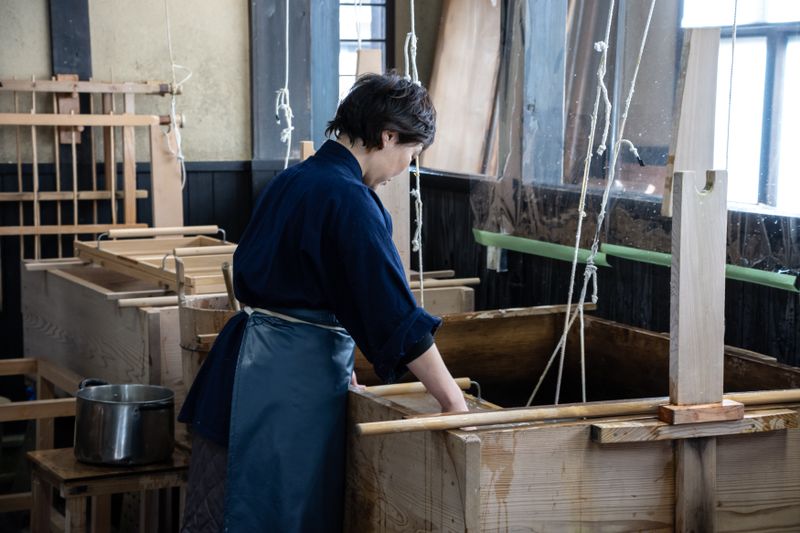
(Udatsu Paper and Craft Museum, Echizen Washi Village)
Head a short distance due south of Echizen Washi Village and eyes might be drawn to the distinctive A-frame structures of the Takefu Knife Village.
The origins of Echizen uchihamono (forged knives) production date back some 700 years and is said to have its roots in the production of sickles for farmers. Demand grew on the back of the lacquerware industry which used the sickles for collecting lacquer.
A few centuries later and the approaching “bubble” years in Japan (starting from the mid-eighties) saw a slow down in Echizen uchihamono production in the face of mass-produced, inexpensive blades.
The Takefu Knife Village was born out of these uncertain times for the local industry during which a study group was brought together to pave the way for a brighter future. Takefu Knife Village emerged as a brand bringing together the traditional techniques of Echizen uchihamono and modern industrial design. A base of operations followed in 1993 -- the facility you can visit today.
Today, Takefu Knife Village is a cooperative association of knife companies some of which share the on-site production facilities to create their own knives and collaborate on others. A highlight of a visit to the Takefu Knife Village complex might be heading up to the viewing deck from which you can see knives being forged and sharpened below.
 (Takefu Knife Village)
(Takefu Knife Village)
You can shop for knives here, too. In fact, culinary experts come to Takefu Knife Village from outside of Japan to check out the blades. For more information about the facility and product line-up (Japanese with some English) https://www.takefu-knifevillage.jp/
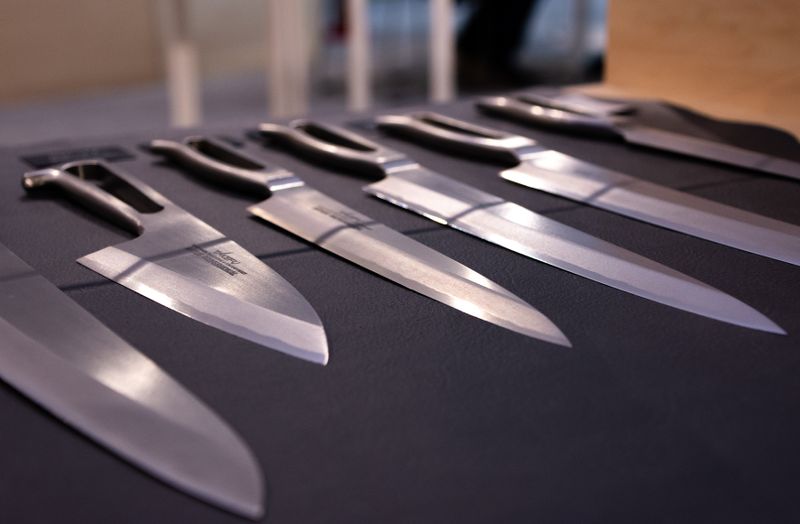
(Takefu Knife Village)
Video: Fukui Remote Quest - Discovering the traditional crafts of the Echizen region
Also in the region:
The city of Echizen sits at the southern end of an urban corridor of sorts that stretches north through the city of Fukui. Similarly, an historical and cultural corridor of sorts can be experienced to the east of this, starting in the south with exploration of the Echizen washi culture mentioned earlier.
Jump back into the north-bound flow of the urban corridor and jump out again as you approach downtown Fukui to head east to the site of the Ichijodani Asakura Clan Ruins.
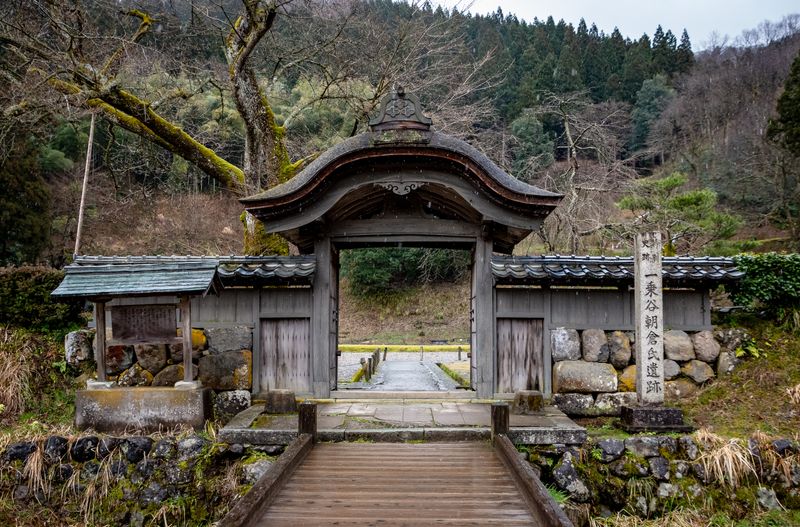
(Ichijodani Asakura Clan Ruins)
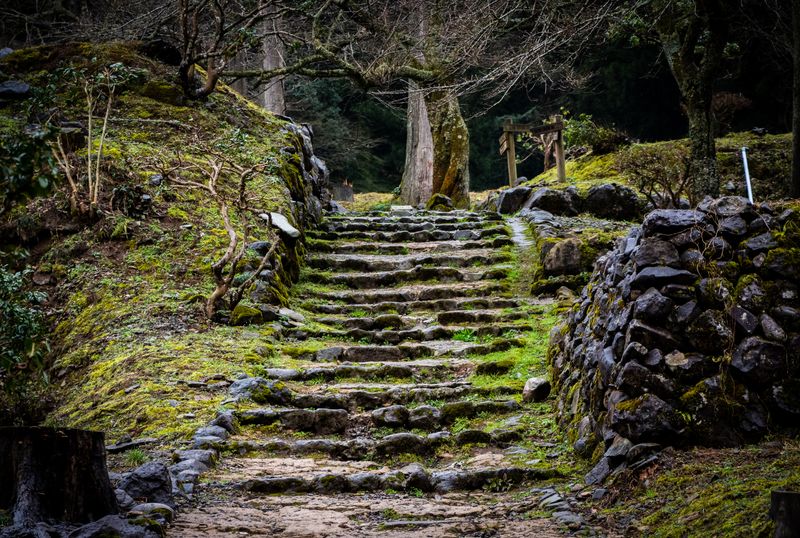
(Ichijodani Asakura Clan Ruins)
The Asakura clan ruled this area from 1471 to 1574 and today you can visit the ruins of their castle town. This extraordinary site spreads across a quiet valley and is cut in two by the river which runs through it. It’s a grand setting.
A section of the ruins has been reconstructed to recreate samurai homes and storehouses. The ruins of the Yudono Gardens, which overlook a (ruined) daimyo residence, offer nice views over the area.
All in, the Ichijodani Asakura Clan Ruins is a large site. Allow at least two-three hours for exploring and strolling.
With your own set of wheels you can continue north from the ruins hitting route 364 to wind up into the mountains before making a quick descent into the town of Eiheiji, home to a temple of the same name.
Eiheiji, its precincts and buildings, is an impressive setup befitting its role as one of two head temples for the Soto sect of Zen Buddhism in Japan. The temple was established in the middle of the 13th century.
A wooden gallery guides visitors around a circuit of Eiheiji’s precincts and main buildings. This is still very much a working temple with priests and trainee-monks going about their daily routines and tasks. Visitors are expected to behave accordingly or indeed “as participants in religious training,” according to the pamphlet issued at the temple entrance. Don’t be alarmed though, you’re free to follow the visitor route unsupervised and won’t be required to do any training! (Zen experiences are available for a fee. Advanced reservation required.)
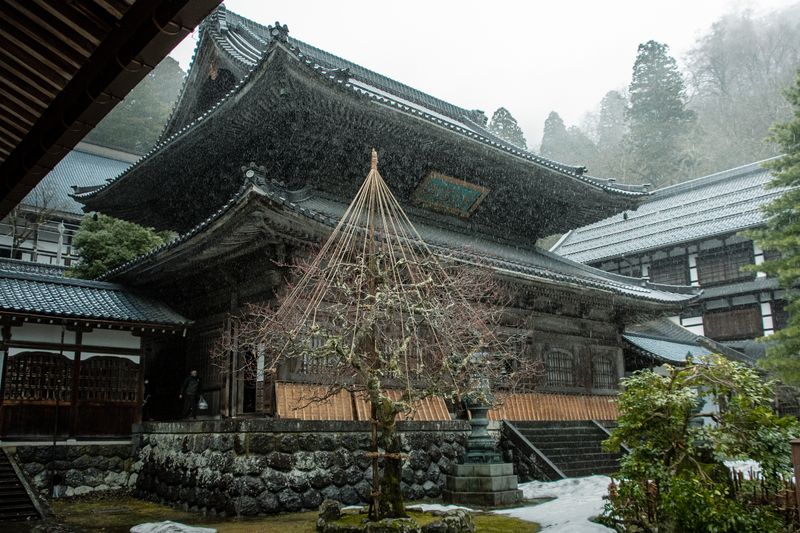
(Eiheiji Temple)
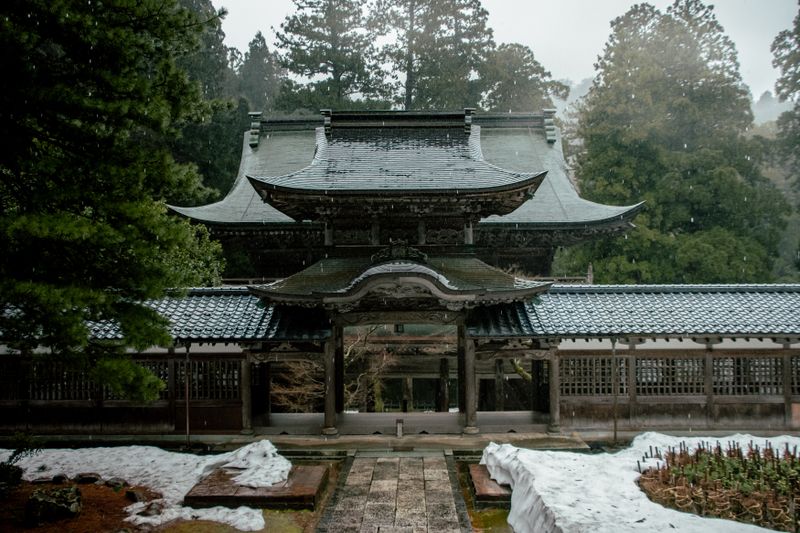
(Eiheiji Temple)
Eiheiji and its mountain slope location, beside a gushing mountain stream and surrounded by towering trees, is a majestic place, whether you are interested in zen or not.
Map: Takefu Knife Village



0 Comments